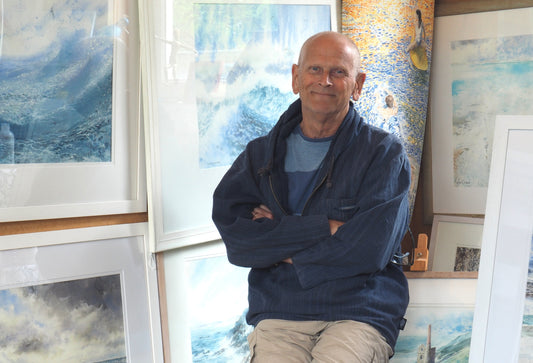Tips for Taking Better Photos for your Art Inspiration
Share
There is nothing like the instant gratification of viewing a photo you'd just taken. However while the technology may be instant, the skill in becoming a photographer takes patience and practice. I can still recall the moment when the science clicked and I discovered that photography is an art.
When I worked and commuted into London I had very little time for painting and my camera was my art. I used to get early trains into London so I could take photos before heading into Soho. At weekends my DSLR camera would go everywhere with me and I hated missing out on fireworks or a good sunset. I'm a bit more relaxed now, especially with the improved camera functionality on mobile phones, I know I always have a camera with me.
I rely heavily on my photography skills in order to build up a library of images that I can refer to for my paintings. While I get inspiration by being out in the countryside, my memory is imperfect and I don't have time to stop in it and paint. Therefore my camera is my best friend.
Wherever I go, it's very quick and easy to take a snap on my mobile. As a result I take a LOT of photos. More than I will potentially be able to revisit in my lifetime - eek!
When there's a sunset, I'm a nightmare - I can take up to a hundred photos for one sunset! However, a little more thought can lead to getting what I need from a few quality photos rather than a comforting but alarming, quantity of a don't-want-to-miss-a-thing approach.
Recently I learned an important lesson about taking a beat before clicking away. It's something I do for my painting, but never thought about it in terms of my photography. Take better quality photos, don’t rely on quantity.
At the Newquay Society of Artists demo this month Peter Hodges talked us through his approach to photography. From the planning stage; thinking about what you want to take a photo of and then what you can do to make it interesting. Through to some of the best technical explanations I've ever heard with regards to photography concepts. Peter may not claim to be a 'photographer', just a guy who takes photos, but he knows his stuff!


Prep - check tide times and direction of the sun in relation to the composition of your landscape (there are various apps available to help with this).
Build your picture - beginning, middle and end. Often the subject matter is furthest away from you; sunsets, distant mountains, islands at sea, etc… so aim to think of the entire image, not just areas of, but how each bit fits together.
Work on rule of thirds or symmetry. Rule of thirds are strong guidelines for every photographer and symmetry is a great way to create an eye-catching composition. However symmetry often doesn’t work well together in rule of thirds, therefore pick the best for your subject.
Take your time. Rome wasn’t built in a day; it’s best to take less pictures taking your time, rather than take loads in the hope that one will be ok.
Enjoy it! Good moods result in happier results. Try and work on the concept that the best picture is your last one and improve on that the next time you go out.
Great tips to ensure you are prepared, thoughtful of the image you want and I love the last tip of ‘enjoy it’ - let’s be honest, that’s what it’s all about!
To see more of Peter's work check out his website.
I'm determined to aim for quality over quantity going forward. It's an easy lie to tell yourself that digital photos are free so take as many as you want. The cost is in time when you have so many photos you just don't know where to start, I'm drowning in an abundance of average photos as well as a few special ones - but they are hidden in the masses.
People use photos for different things, primarily nowadays I'm looking for painting inspiration. Peter’s top tips resonate with me and I look forward to taking better photos for better art inspiration!



















